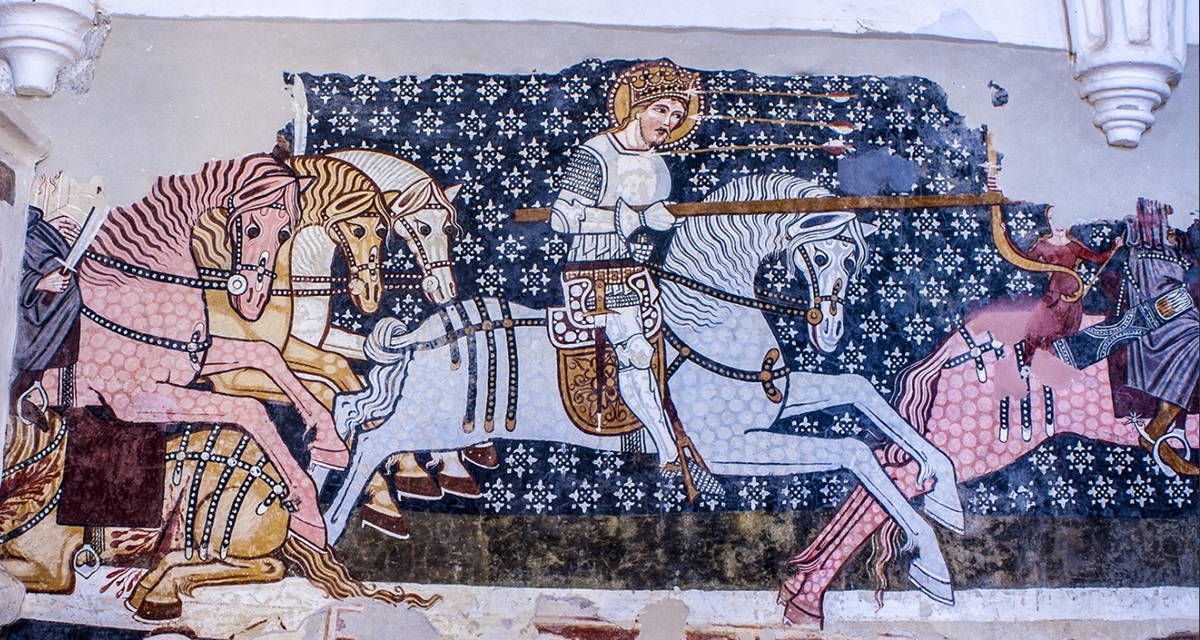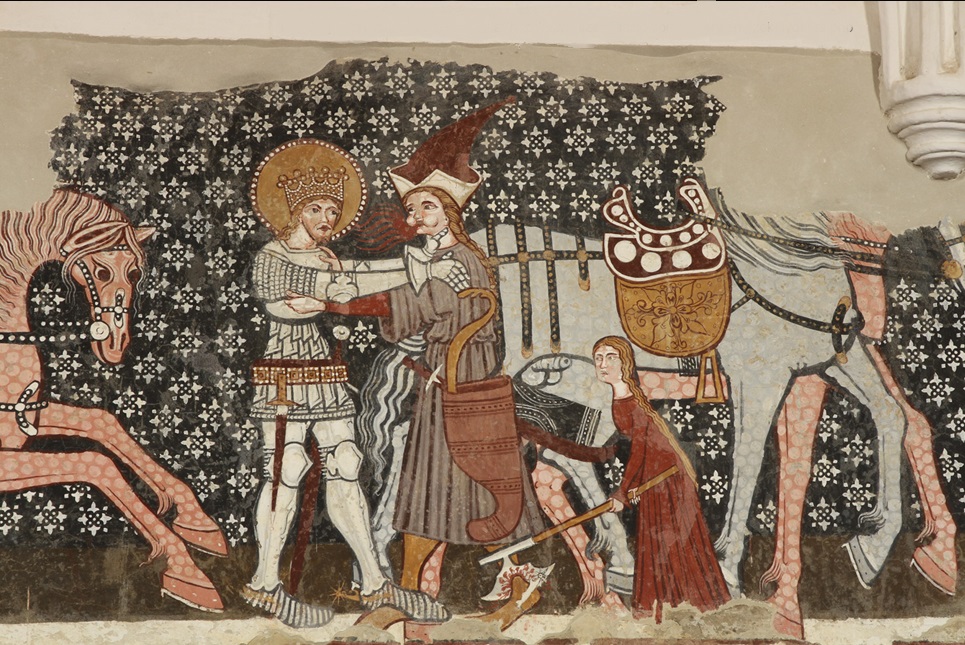Location: village Dârjiu in Transylvania – Central Romania
Address: DJ133 - Dârjiu, Harghita county
Nearest large towns: Sighisoara (20 miles W) and Odorheiu Secuiesc (15 miles N)
Nearest train stations: Sighisoara and Vanatori (19 miles W)
The fortified church at Darjiu (Székelyderzs), a UNESCO World Heritage Site, was initially built in Roman style in the 14th century and, later rebuilt in gothic style. It was fortified in the 16th century when locals drew inspiration from the fortified churches in neighboring Saxon villages.
The Gate Tower preserves its initial form, with openings for fire arms; wooden shutters provided protection against incoming bullets. The original interior frescoes, some of the most impressive Transylvanian medieval works, have been well-preserved; best-known are the ones featuring the legends of St. Ladislaus.

Against the interior side of the defendig walls, grain-storage rooms, still in use today, have been built.
Smoked hams, meats and sausage have always been - and still are - stored in the main tower of the fortress,
hanged on wooden hooks assigned to each family.
The hooks stay in the family and are inherited from one generation to another.
The number of hooks, owned by a family, indicates the wealth and social status.
Grain may be picked up every morning, but bacon only once a week.
have been opened to allow the members of the community access to the food storage rooms.
Visitors can witness the weekly century-old custom of access to food provisions by making an appointment (please call/E-mail before the end of the week that precedes the one when they are planning to be in Darju).
Meals that feature locally produced foods and drinks (i.e. fresh sheeps milk cheese, smoked ham, plum brandy and more) can be arranged for a very reasonable fee.
...Darjiu Unitarian Church Visiting Hours
Unitarian church services every Sunday starting at 11:30 a.m.
Events (marriage, christening, other) - Saturdays from 3 p.m.
April 1 — June 30
by appointment only - 24 hour notice, no guide service available
Tuesday - Sunday: 10 a.m. - 6 p.m.
July 1 — August 31
(guide service available: English, Hungarian and Romanian)
Tuesday - Sunday: 10 a.m. - 6 p.m.
September 1 — October 31
by appointment only - 24 hour notice, no guide service available
Tuesday - Sunday: 10 a.m. - 6 p.m.
November 1 — March 31
Closed to visitors
Telephone: (+4) 0744 557.659
More info on Dirju Fortified Church
Village Dirju visitor info
...King Ladislaus was one of the greatest ruler of the Kingdom of Hungary (1077 -- 1095).
Admired for his bravery, strength and honest heart he was cononised in 1192.
Later kings considered him as a role model, and after their coronation ceremony, they often paid their respects to him at his grave in Oradea (Nagyvárad) - Romania.
King Ladislaus (St. Ladislaus) fought a series of battles with the Cumans, here are some legends crafted about his deeds a folk tales of these events:
One time, king Ladislaus’ army was close to starvation and the king prayed to God for help.
Not much later, a horde of bison and deer appeared and his army could hunt and eat.
Once the Cumans were pursued by king Ladislaus’ army and were almost caught. In order to distract the pursuing soldiers, the Cuman leader ordered his soldiers to scatter their money on the ground hoping that the enemy will stop chasing them to pick up the gold. So it was, but king Ladislaus again turned to God for help and, God turned the gold and silver coins into little stones thus the diversion failed. Even today some fossils that can be found in Turda Gorge area are called "St. Ladislaus’ money".
King Ladislaus troops were fleeing the Pechenegs and were almost caught. The king requested help from God and God split the Turda mountain into two to allow his army to pass. Then God brought the mountain back to its initial state and the Pechenegs could not follow them.
King Ladislaus saw a pagan (Cuman = Turkic nomad marauder) who kidnaped a girl. He decided to save that girl, so he chased the Cuman on the horse, but could not get him. Eventually, St Ladislaus shouted to the girl that she should try to pull the warrior off his horse, and so she did. Then king Ladislaus wrestled with the Cuman and killed him.
King Ladislaus was admired by many already during his life, thanks to the diplomatic ways in which he ruled and for his bravery along with his physical build. He was often described as “God’s athlete” for he was thought to be at least a head taller than his soldiers and quite strong even in old age. 250 years after King Ladislaus death, the Székely troops were in trouble during battle and prayed to St. Ladislaus for help. Not much later a tall, valiant soldier came to their aid. This is called the Patrocinium wonder. Witnesses said that, during the fight, king’s corpse has disappeared from his crypt and, after the battle was done, the body was found again drenched in sweat, suggesting that he was out on the battlefield fighting.(Source: Clevelandi Magyarokért Foundation)



